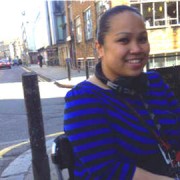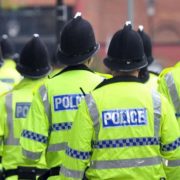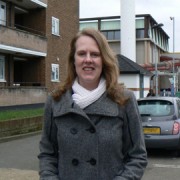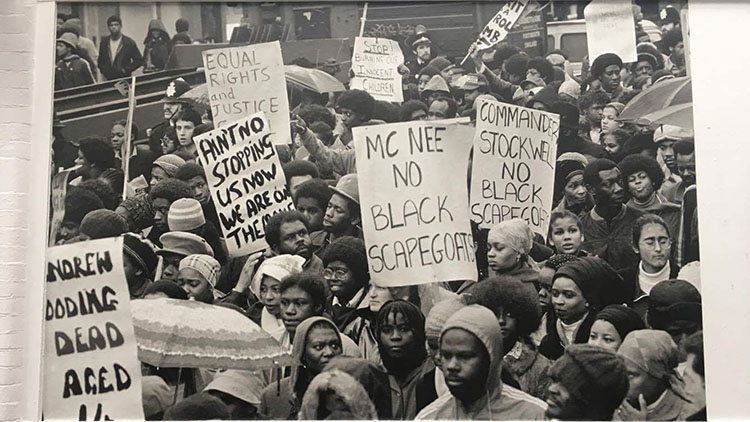
Ware’s photographs of marchers on New Cross Road. Pic: Vron Ware
A collection of never-before seen photographs that document the history of the 1981 Black People’s Day of Action, a march of solidarity on New Cross Road, are currently on display at Goldsmiths, University of London. This is the first public display of the images taken by photographer and academic Vron Ware.
The 1981 march was a response to a fire at 439 New Cross Road, that killed 13 black Londoners who were subsequently unacknowledged and misrepresented by the media. It was suspected that the fire could have been a racially motivated arson attack, as many such attacks had previously occurred around the same time in Lewisham. Ware had attended the march where she took the photographs.
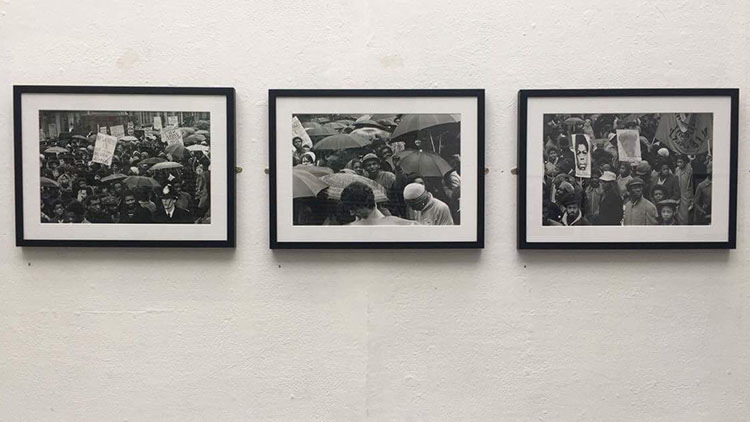
Photographs in the Kingsway corridor, Goldsmiths College. Pic: Victoria Lancaster
The Moonshot Club in New Cross was where thousands of Londoners had met in solidarity to march and remember the lives of the young Londoners who had been celebrating the birthday of Yvonne Ruddock, one of the victims, when the fire started. Those who marched travelled through London to Fleet Street, which was then home of the British newspapers.
Les Back, Professor of Sociology at Goldsmiths, discovered Ware’s photos while composing his own research on historical movements in New Cross. His other work includes the study of urban life, multiculturalism, and racism.
Back told Eastlondonlines: “ I had no idea she [Vron Ware] had documented the march photographically. Then she told me she had several rolls of film from the demonstration that hadn’t ever been seen publicly. The images are just astonishing. I thought people should be able to see them.”
Back said that this march was especially important for Britain’s black history: “So many of the people who have shaped and documented the black experience in Britain were there that day. Writers like Paul Gilroy, Harzel Carby, poets like Linton Kwesi Johnson, filmmakers like Menelik Shabazz and educationalists like Heidi Mercer and Roxy Harris. It was a community on the move politically and culturally.”
The photos in the exhibition showcase a detailed look at the faces and picket signs of those who marched. Aside from participating in the March, Ware was also an editor of the anti-fascist and anti-racist magazine, Searchlight.
Ware said in the exhibition video: “It was a rainy day and so people had umbrellas and it was very grey and sombre. There was a really strong sense of resistance and community and collective action. You can tell from people’s faces the determination that things cannot go on the same.”
The images in the exhibition are presented alongside historical documents from the New Cross Massacre Committee. It also includes direct quotations from those who marched and organised the event. Back spoke to the resonance that the exhibition still has in a contemporary society facing racism today.
Back said: “ I think it tells us something very important about how racism relegated the tragic loss of the lives of those 13 young black people to something that was not important. Nothing was said and they (the 13 killed) simply didn’t matter from the vantage point of white society. Racism does many things but perhaps one of the most violating things it does is to make the lives of its victims dispensable and of a lesser worth. That inhumanity that lies at the heart of racism needs to be fought in every generation.”
The photographs on display in the exhibition form part of Autograph ABP’s digital and print library. The exhibition will be on show at Goldsmiths, University of London until May.


